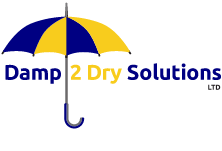
You might have encountered damp patches, discoloured spots, peeling paints, or flaking wallpaper without any obvious source of water intrusion. In many cases, not only older properties but also modern constructions face this problem. What, then, is causing these wet patches when there is no leak?
In this article, we explain the causes behind such damp patches, how to diagnose them accurately, and the effective strategies we use to restore your property.
How to know you have damp patches?
Damp patches can be easily noticed on the walls where excess moisture accumulates. This moisture settles on the surface or seeps into the building structure, affecting brickwork, plaster, and timber. In regions with high rainfall or cold temperatures, like the UK, moisture easily builds up from both external and internal sources, even when no leaks are apparent.
Common Causes of Damp Patch On Wall
There are several reasons why damp may appear on walls even though there is no visible leak:
- Rising Damp: moisture from the ground rises upward in the building due to structural inefficiency. Majorly because of the failure of the damp proof course.
- Condensation Buildup: airborne moisture condenses on walls to produce condensation dampness. This is a result of poor ventilation combined with a temperature difference.
- Broken Window Seals: no proper window seals allow external moisture to enter and form wet-looking spots on walls, even if there is no leak.
- Gutter Blockages and Roof Issues: leaking or blocked gutters may channel water onto the wall, even if the leak itself is not directly visible inside.
Effective Treatments for Damp Patches
Once the underlying cause is identified, you can follow these solutions to address the root problem and prevent recurrence.
1. Tackling Rising Damp
- Damp Proof Course (DPC) Treatment: If rising damp is identified, reinforcing or replacing the DPC is essential. Chemical injection systems or physical dampproof membranes can provide a barrier against rising damp.
2. Managing Condensation
- Improved Ventilation: Installing extractor fans, opening windows periodically, or using trickle vents helps maintain a balanced indoor humidity level.
- Dehumidifiers: Modern, energy-efficient dehumidifiers continuously draw excess moisture from the air, reducing condensation on walls and windows.
- Thermal Insulation: Upgrading insulation minimises cold spots, thus reducing the likelihood of condensation forming on internal surfaces.
3. Addressing External Moisture Sources
- Roof and Gutter Maintenance: Repairing broken roof tiles, clearing gutter blockages, and sealing window frames can stop moisture entering from external sources.
- Waterproofing Treatments: Applying high-quality waterproof paints or sealants on the exterior of walls prevents water penetration without compromising breathability.
4. Surface Treatments for Immediate Improvement
- Damp-Proof Paint: For cases where moisture has already affected the wall surface, we recommend applying specialist damp-proof or anti-mould paints. These coatings help to seal the wall and inhibit the growth of mould while still allowing moisture to escape.
- Repair of Damaged Plaster: In severe cases, stripping back the plaster to remove contaminated material, followed by re-plastering, ensures a long-lasting finish.
Conclusion
Damp patches on walls, even in the absence of a visible leak, can stem from a variety of causes—from rising damp and condensation to external moisture intrusion. Our comprehensive evaluation process and treatment ensure that the underlying issue is effectively addressed and prevented from recurring. By improving ventilation, reinforcing structural barriers, and maintaining regular upkeep, we help protect your property and improve indoor air quality.
For a complete assessment and personalised damp treatment plan, we recommend scheduling a professional damp inspection. Early intervention not only safeguards your property but also contributes to a healthier living environment.
If you suspect damp patches are affecting your home, we are here to help. Contact us today for a detailed damp survey and expert guidance on restoring and protecting your property.
